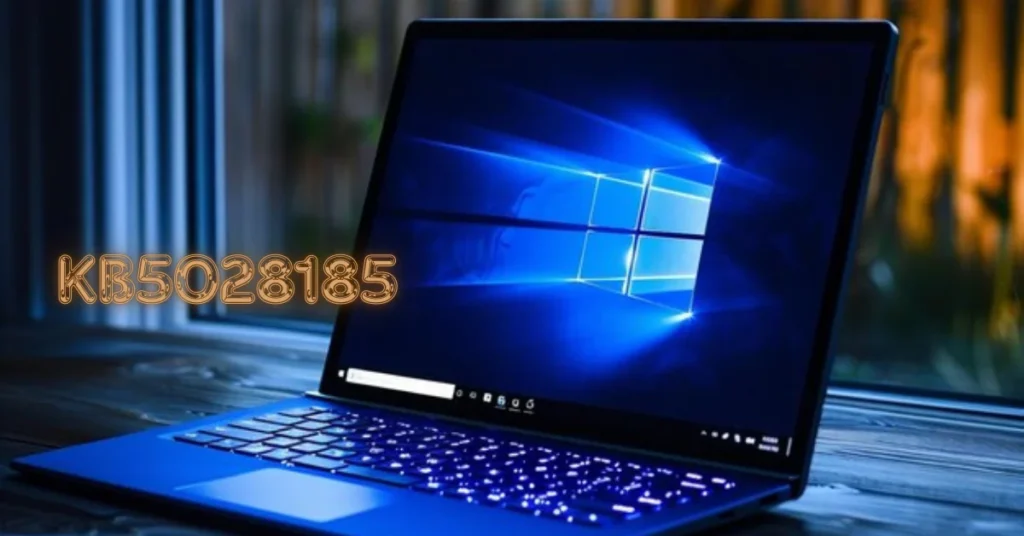Introduction to Windows 11 KB5028185 update
The tech world is buzzing with excitement as Windows 11 introduces its latest update, KB5028185. If you’ve been following the evolution of this operating system, you know how crucial these updates can be for enhancing performance and security. This release promises a slew of new features that aim to improve your user experience while also fortifying your device against potential threats. Whether you’re a casual user or a tech enthusiast, understanding what’s in store with KB5028185 will help you make the most of your Windows 11 setup. Let’s dive into everything this update has to offer!
Overview of new features and improvements
The Windows 11 KB5028185 update introduces several exciting features that enhance user experience. One notable addition is the revamped taskbar, which now allows for more customization options. Users can pin their favorite apps with ease and access them faster than before.
Another improvement lies in the enhanced Snap Layouts feature. This functionality makes multitasking smoother by enabling users to organize multiple windows effortlessly on their screens.
Additionally, a new focus mode has been implemented within the settings menu. It helps users concentrate better by minimizing distractions from notifications and alerts while working or studying.
The update also brings performance optimizations that increase system responsiveness. This ensures applications load quicker and run more efficiently, providing a seamless experience overall.
These enhancements reflect Microsoft’s commitment to refining Windows 11 based on user feedback while prioritizing usability and efficiency across devices.
Enhancements in security and privacy
The KB5028185 update brings vital enhancements to security and privacy, reinforcing Windows 11’s commitment to user safety. With cyber threats becoming more sophisticated, these updates are crucial.
One notable enhancement is the improved protection against ransomware attacks. The new features help safeguard sensitive files by limiting unauthorized access. This ensures that your data remains secure even in a volatile digital environment.
Additionally, Microsoft has introduced better controls for app permissions. Users can now manage which applications have access to their personal information with greater ease.
Another key improvement involves enhanced encryption protocols, making it harder for malicious actors to exploit vulnerabilities within the system. These upgrades not only protect individual users but also strengthen overall network integrity.
With these advancements, Windows 11 continues to prioritize user trust while navigating an increasingly complex online landscape.
How to install the update
Installing the KB5028185 update on your Windows 11 device is straightforward. Start by navigating to the Settings menu. You can do this quickly by pressing the Windows key and I simultaneously.
Once in Settings, click on “Windows Update” located at the bottom of the left sidebar. Here, you’ll see if updates are available for your system.
If KB5028185 appears in the list, simply press “Download and Install.” Ensure that your device is connected to a stable internet connection to avoid interruptions during download.
After installation completes, it’s wise to restart your computer. This ensures all features take effect properly.
For those who prefer manual installation or encounter issues, visit Microsoft’s official website for direct download options related specifically to this update.
Common issues and how to troubleshoot them
After installing the KB5028185 update, some users might encounter common issues. One frequent problem is system performance lag. If your device feels sluggish, try restarting it first. This simple step can often clear temporary glitches.
Another issue could be application compatibility. Some programs may crash or fail to launch after the update. If this happens, check for updates for those applications as developers frequently release patches that resolve such conflicts.
Network connectivity problems are also reported by a segment of users post-update. To troubleshoot this, consider resetting your network settings or running the Windows Network Troubleshooter found in Settings.
If you experience unexpected error messages, reviewing the Event Viewer can provide insights into what’s going wrong. It’s a valuable tool for identifying and addressing specific issues tied to the new update.
User feedback and reviews
Users have shared a mix of experiences after installing the KB5028185 update. Many appreciate the new features that enhance productivity and streamline their workflow.
Some highlight the improved taskbar functionality, which makes navigation more intuitive. The added customization options seem to resonate well with those who enjoy personalizing their workspace.
However, not all feedback is positive. A handful of users reported glitches post-update, particularly with certain applications crashing unexpectedly. These frustrations are common in any major update cycle and often lead to discussions in online forums.
Security enhancements garnered praise for increasing user confidence while browsing or using apps. Privacy updates also received attention, reflecting an ongoing concern among users about data safety.
Engagement on social media platforms shows a community eager to share tips and solutions regarding these issues. This exchange fosters a sense of camaraderie as they navigate the changes together.
Is the KB5028185 update worth it?
When considering the KB5028185 update, users often weigh its benefits against potential drawbacks. The new features are certainly enticing. Enhanced performance can lead to a smoother experience.
Many appreciate the improved security measures that come with this update. In today’s digital landscape, safeguarding personal information is crucial. These enhancements can provide peace of mind for users concerned about privacy threats.
However, some may question whether these improvements justify the download. Compatibility issues have been reported by certain devices post-installation. It’s essential to consider your specific setup before proceeding.
User feedback remains mixed; while many celebrate increased functionality, others express frustration over bugs and glitches introduced with the update. If you value stability and reliability in your workflow, it might be wise to wait for further updates or patches before making any changes to your system configuration.
Conclusion
The Windows 11 KB5028185 update brings a host of new features and security enhancements that many users will find beneficial. From improved performance to enhanced privacy controls, this update is designed to enrich your computing experience.
Installing the update is straightforward, but some users may encounter minor issues along the way. Troubleshooting tips are available for those who need assistance navigating these challenges.
User feedback has generally been positive, with many appreciating the tweaks and improvements rolled out in this version. However, every user’s experience varies based on their specific hardware and use case.
Whether you’re looking for better functionality or tighter security measures, evaluating if KB5028185 meets your needs will help you decide if it’s worth installing at this time. Keeping your system updated ensures optimal performance while safeguarding against vulnerabilities.
FAQs
What is KB5028185?
KB5028185 is a mandatory Windows 11 cumulative update that includes security patches, new features, and various improvements.
What are the new features in KB5028185?
The update introduces a revamped taskbar, enhanced Snap Layouts, a new focus mode, and various performance optimizations.
How does KB5028185 enhance security and privacy?
KB5028185 improves protection against ransomware, offers better app permission controls, and strengthens encryption protocols.
How can I install the KB5028185 update?
Go to Settings > Windows Update, and click ‘Check for Updates.’ If KB5028185 is listed, select ‘Download and Install.’
What should I do if I encounter issues after installing KB5028185?
Try restarting your device, updating conflicting applications, resetting network settings, or using the Windows Network Troubleshooter.







